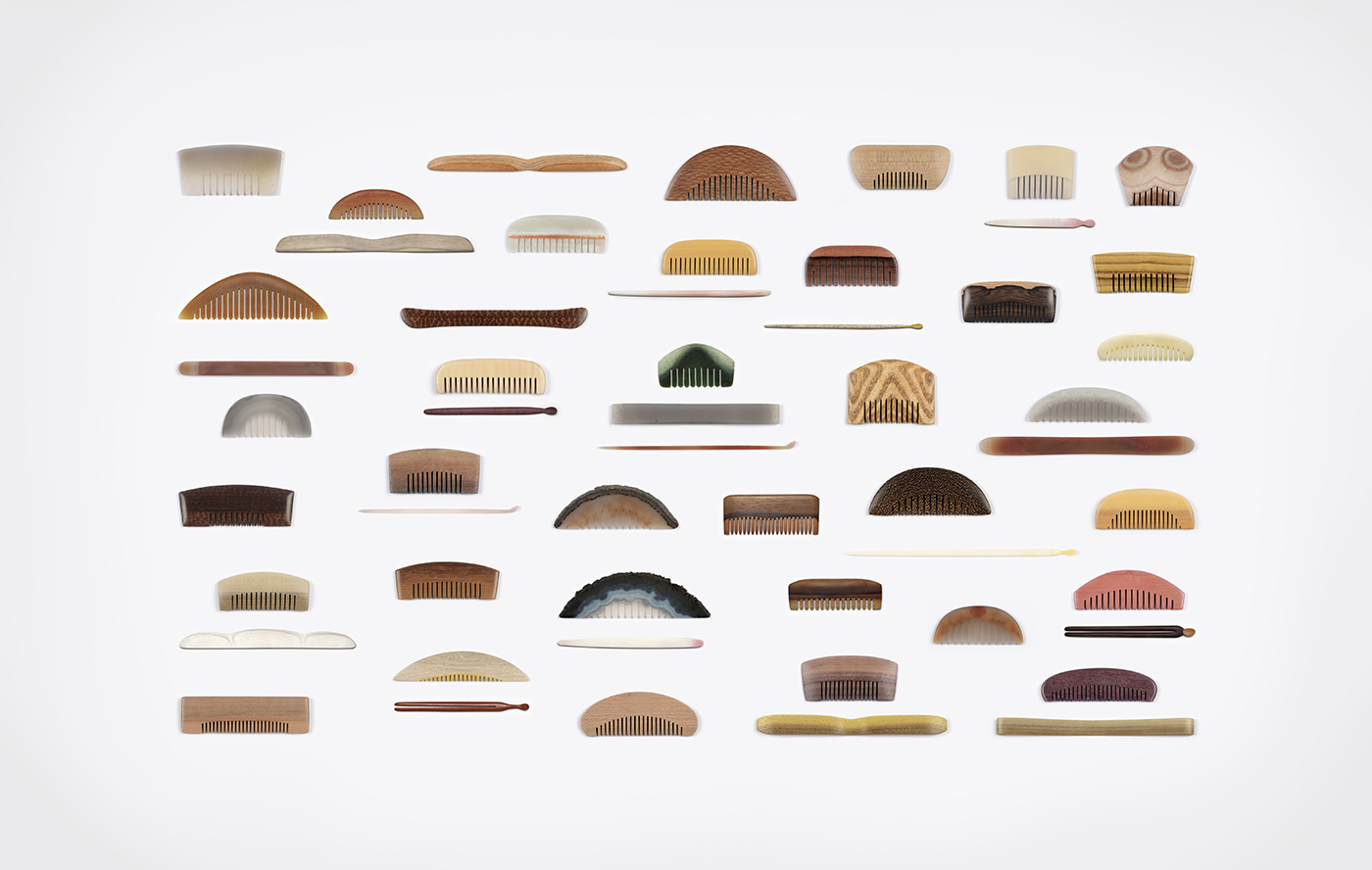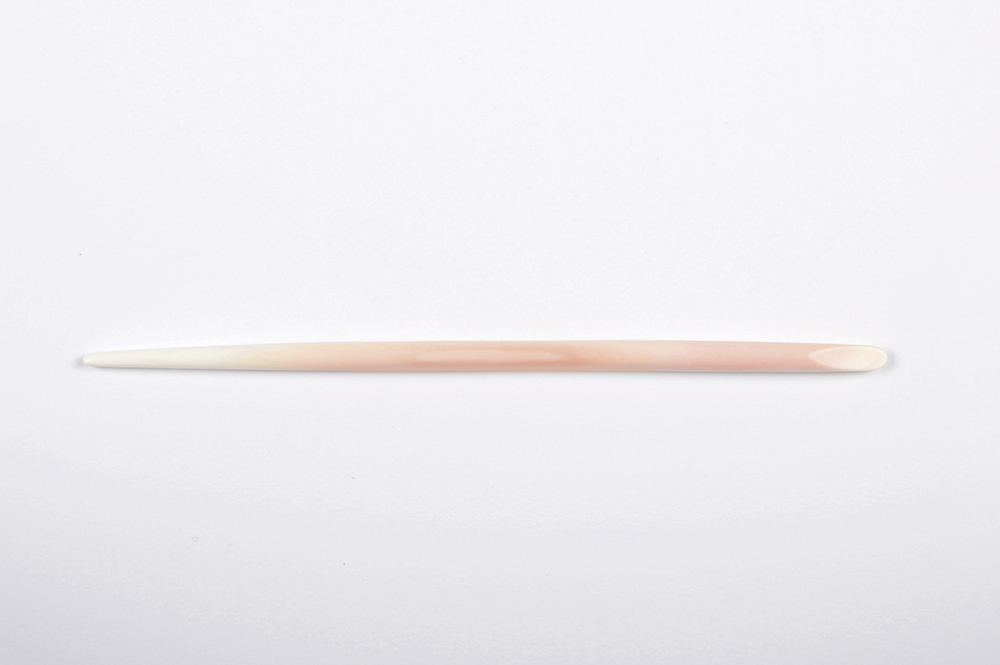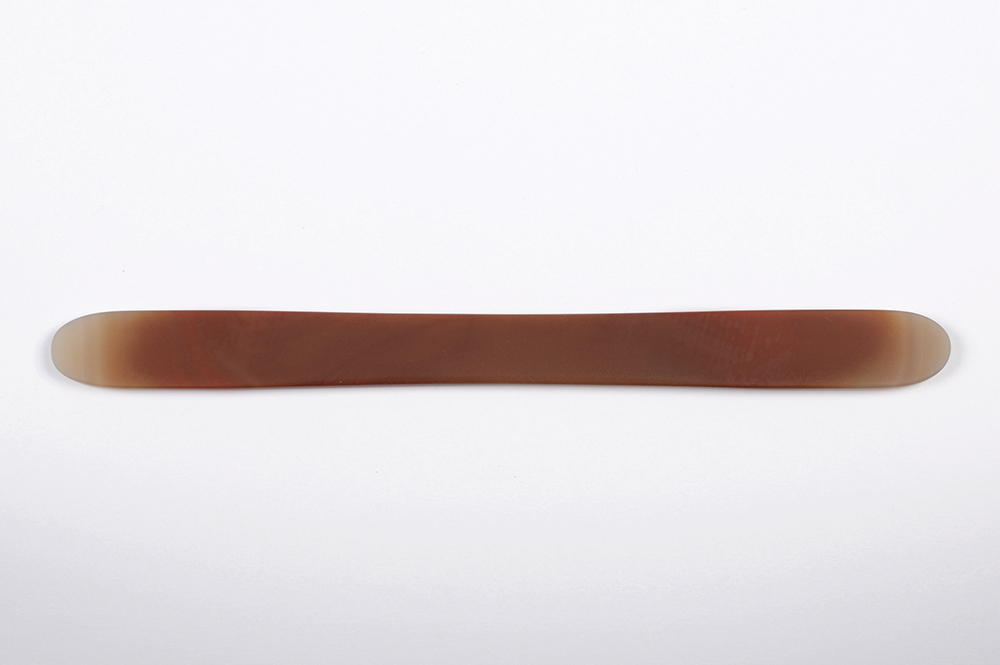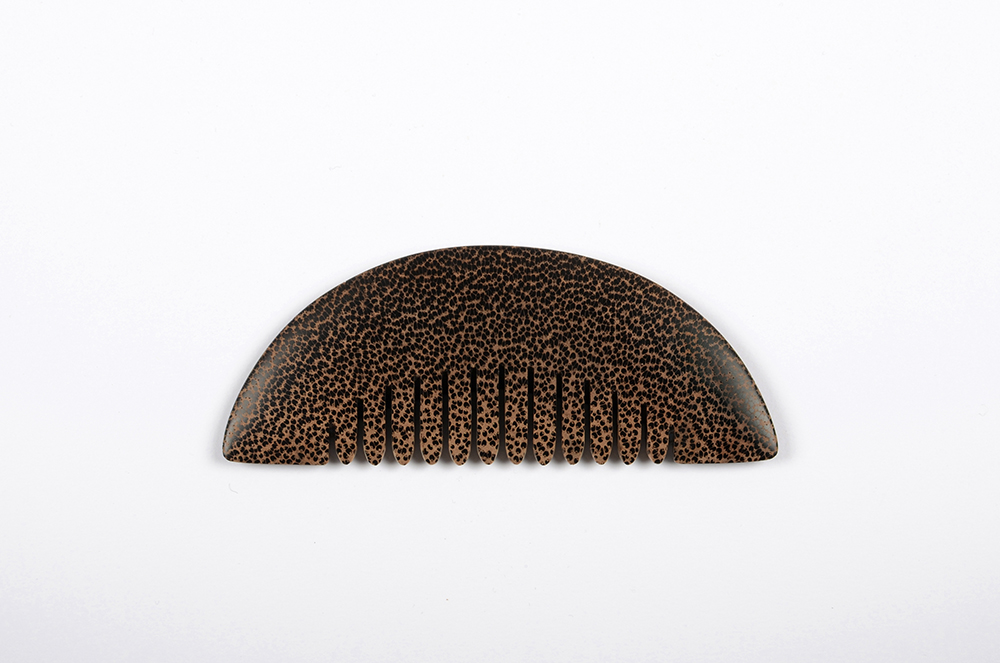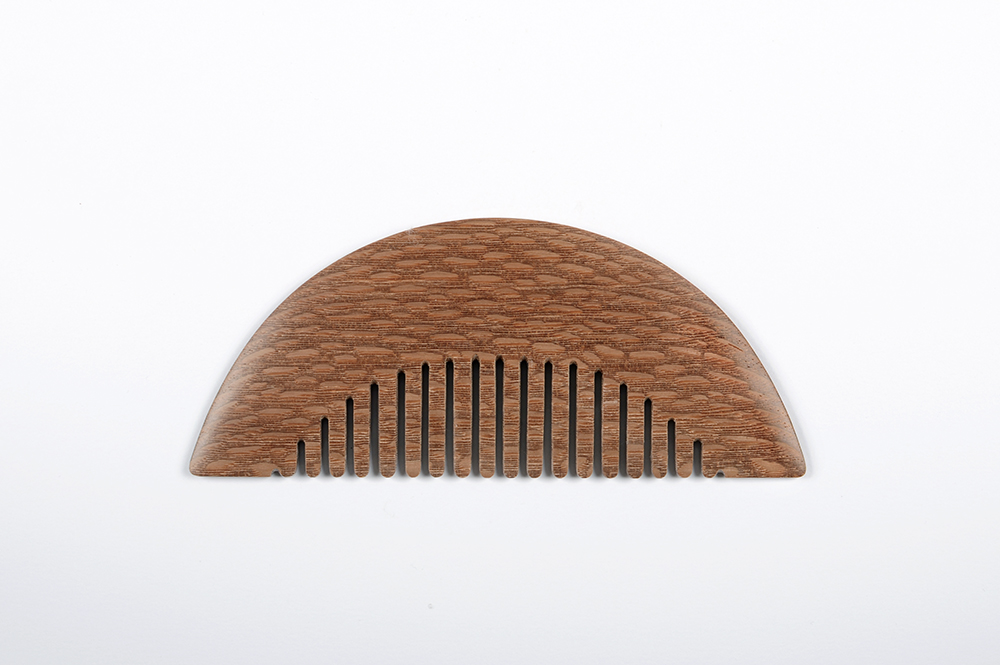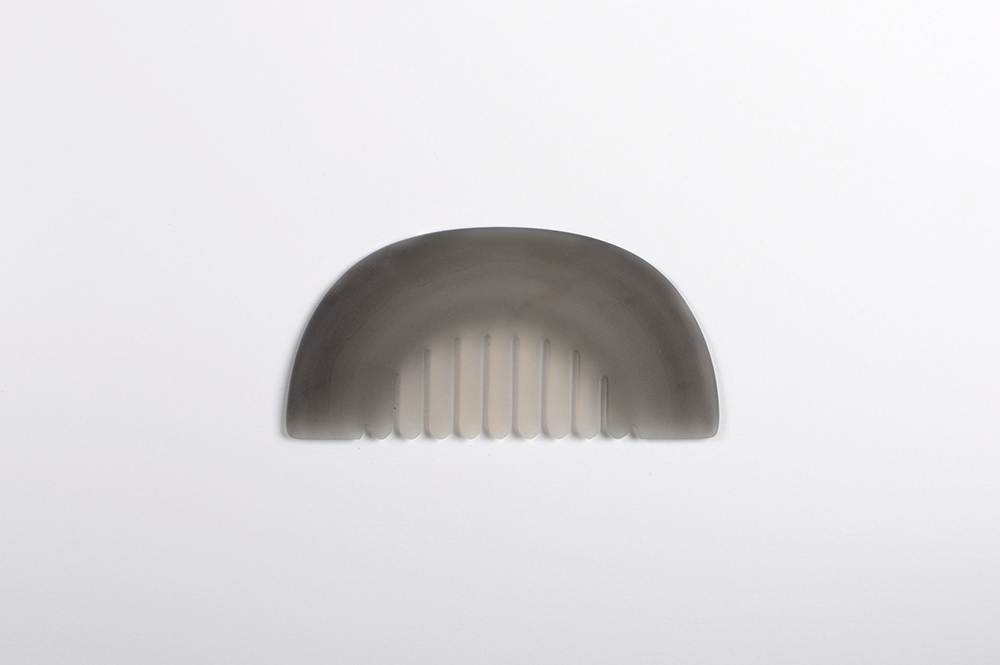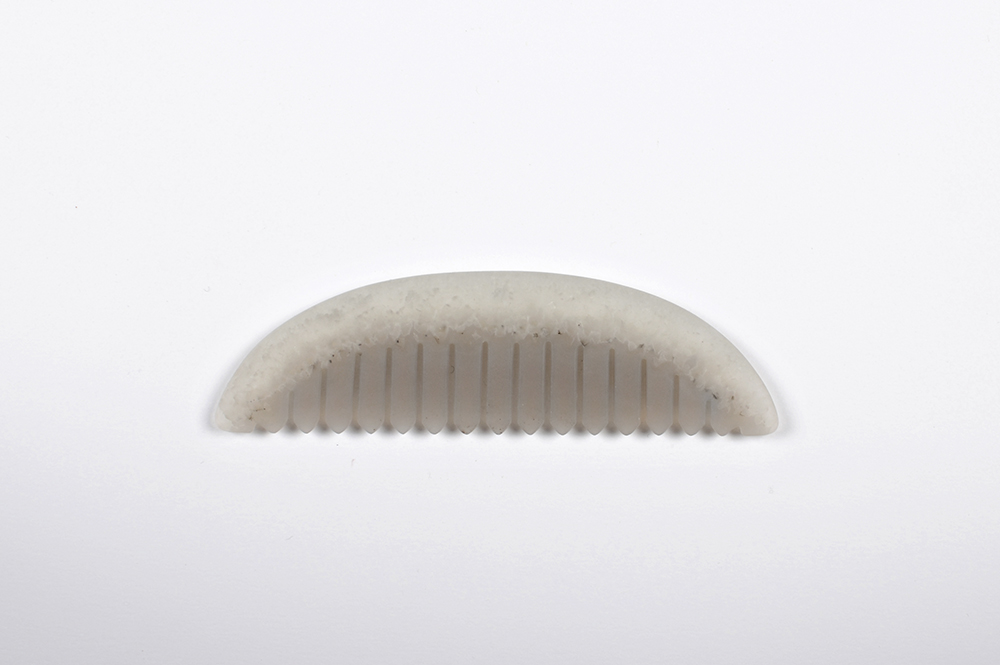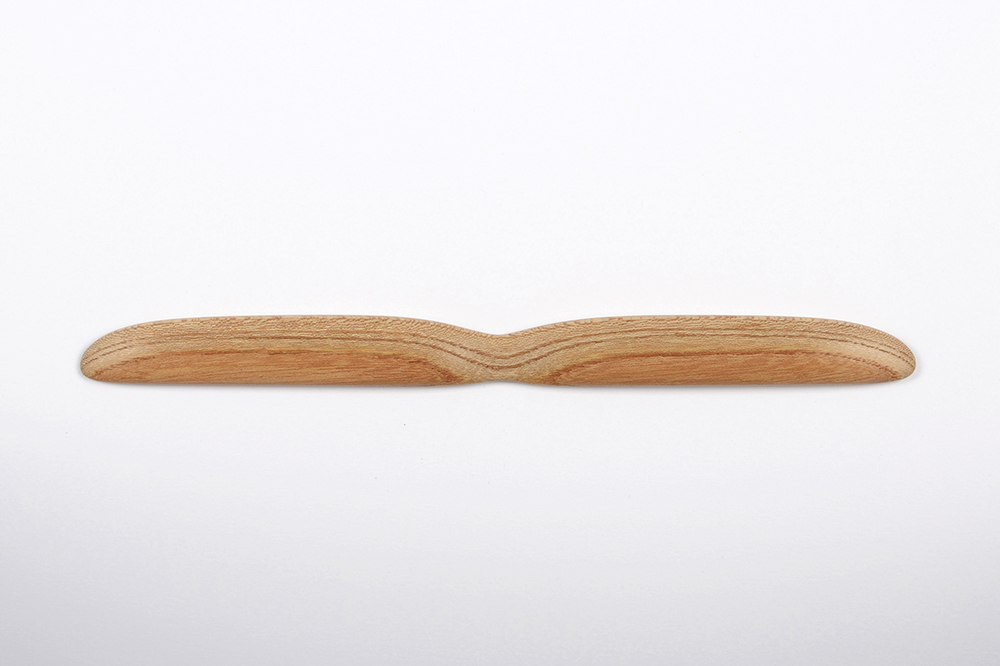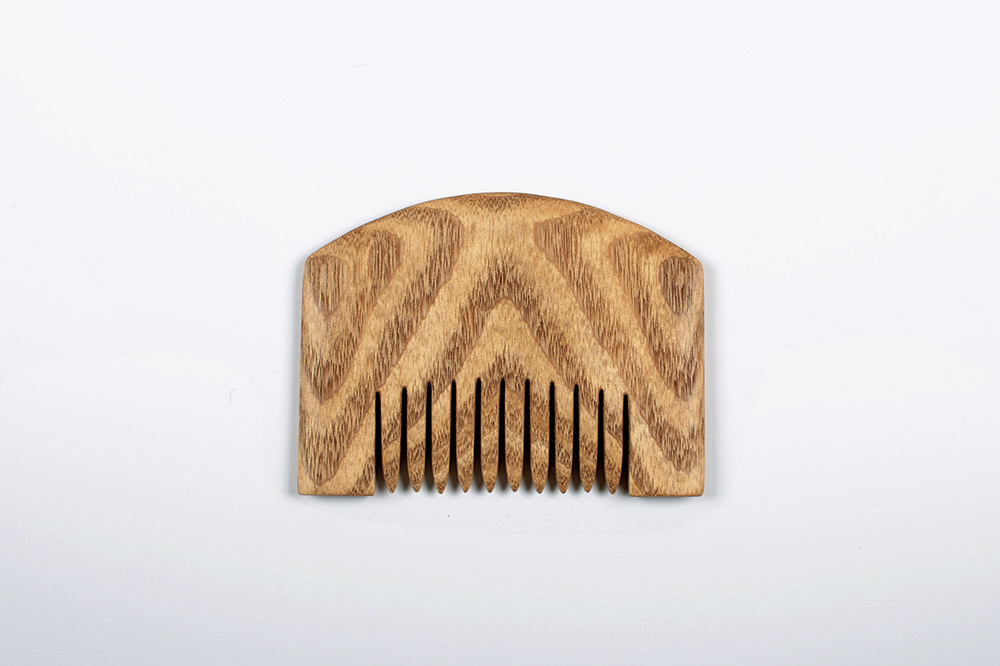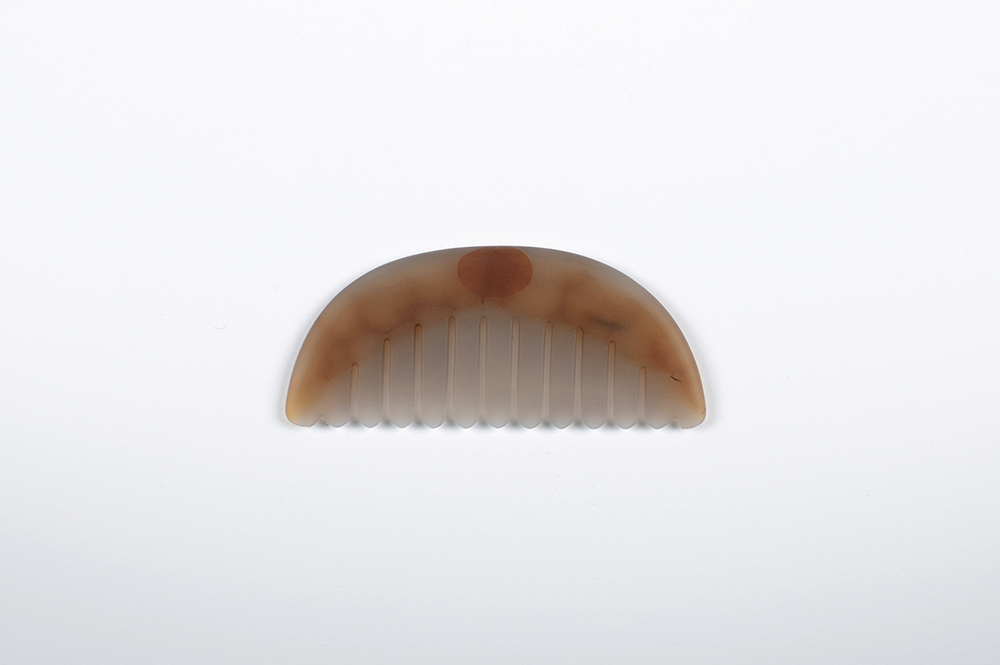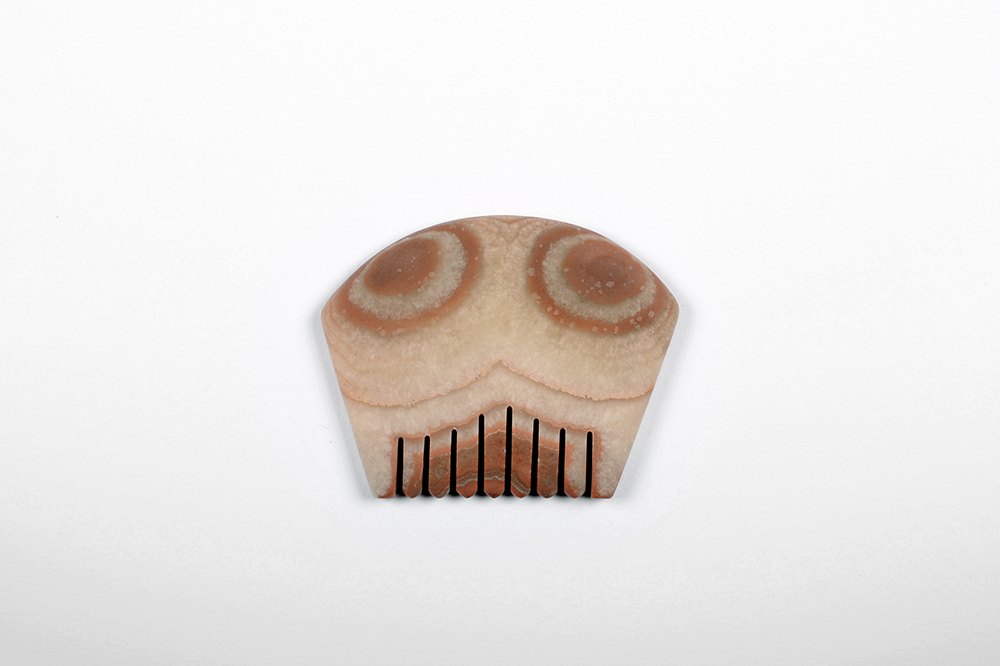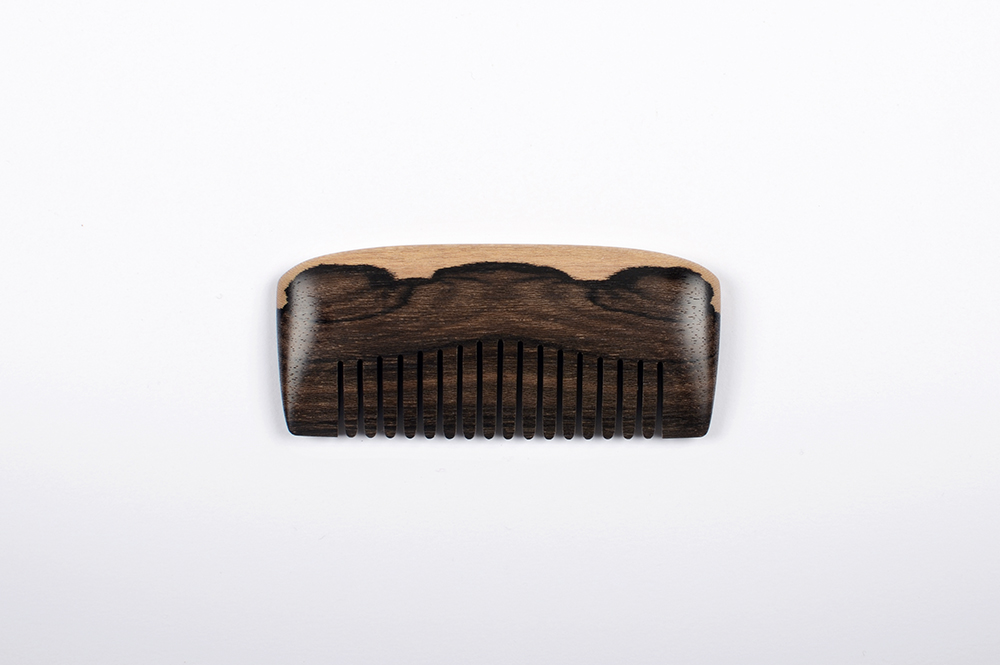During the Edo period, Japanese women used quite specific objets to support their imposing headdresses: Kushis (combs), Kogais (hairsticks) and Kanzashis (hairpins), whose utilitarian function lessened until they became purely ornamental. Throughout my 6 months artist-in-residency in Kyoto, heart of refinement in the arts and the cradle of hair accessories, I strived to define the singularities and specificities of these exceptional objects, focusing on the most characteristic quality: the decor.
This series has been conceived from bone, wood, shell, stone and horse hoof; materials of natural origin, traditionally used for making Japanese hair ornaments (excluding ivory, coral and turtle shell, for ethical and regulatory reasons). The aim is to search within these « raw materials » (Tennennomono in Japanese) for decorative features inherent to them, to harness their « natural patterns » and their unusual chromatic shades: to reveal the unexpected in the familiar. Playing with the confusion between the natural and the ornamental, the pieces create ambiguity and destabilise the viewer.
Kushis (combs), Kogais (hairsticks) and Kanzashis (hairpins). Bone, wood, shell, stone and horse hoof.
Artist-in-residency project at the Villa Kujoyama, Kyoto, Japan, in 2019.
